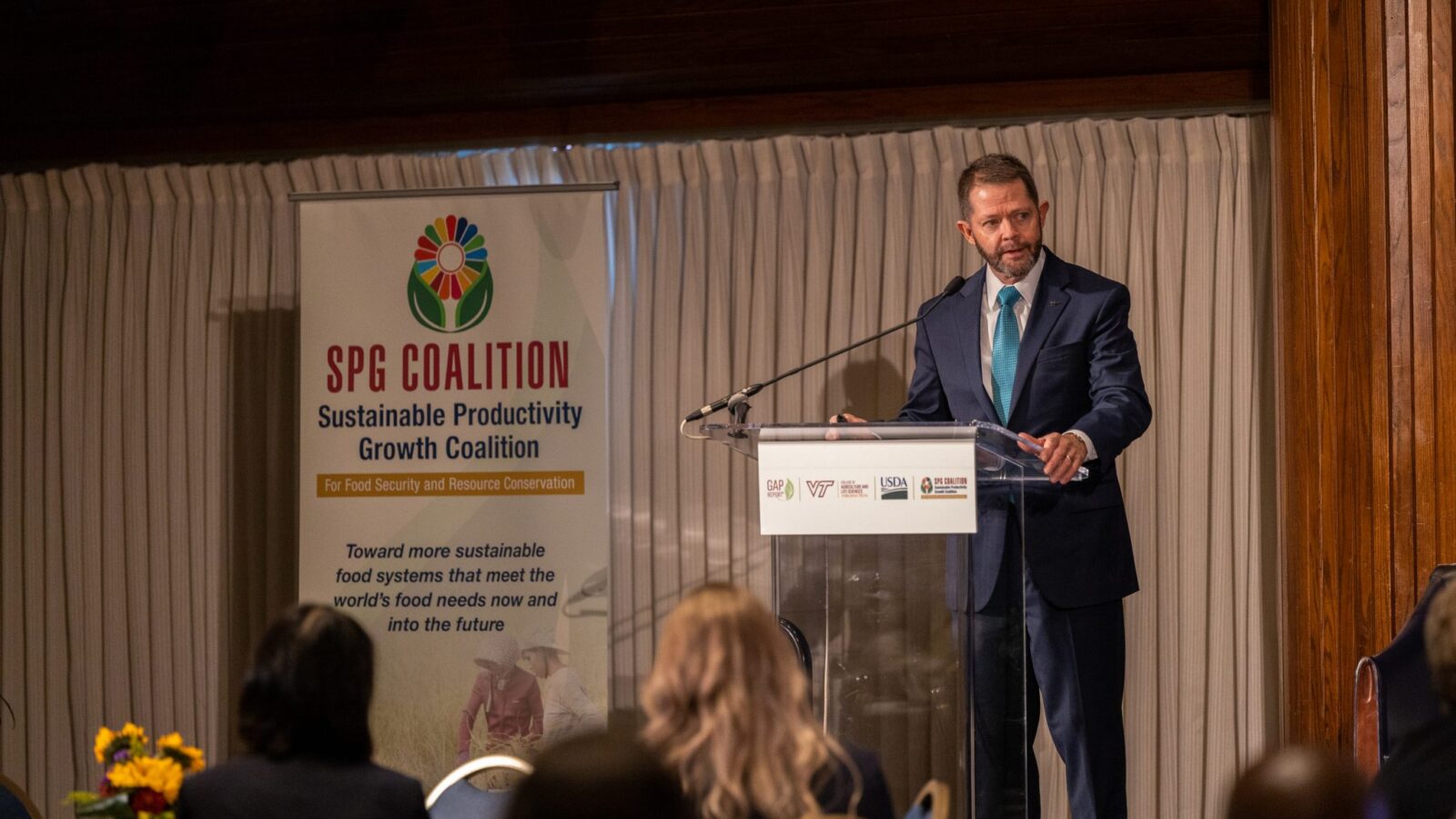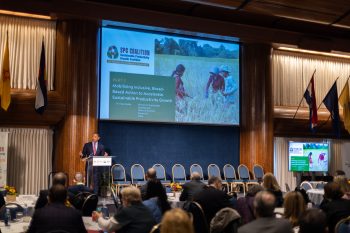
Global agricultural productivity growth is in decline, and current efforts to expand agriculture production to feed a growing global population are inadequate to deal with the challenges the world faces, from climate change to conflict. Those are the key findings of the 2022 Global Agricultural Productivity Report (GAP Report), produced by Virginia Tech’s College of Agriculture and Life Sciences and released at an event co-hosted by the Sustainable Productivity Growth Coalition (SPG Coalition) and the U.S. Department of Agriculture.
Troublesome Trends and System Shocks warns that in order to sustainably produce food and agricultural products for more than 9 billion people in 2050, agricultural productivity must increase from the current low of 1.12 percent per year to 1.73 percent. Using data from USDA’s Economic Research Service, the report shows that from 2011-20, global agricultural productivity grew at an average of just 1.12 percent per year, a significant drop from the average growth rate of 1.99 percent from 2001-10.

“When agricultural productivity grows, it means we’re producing more with fewer inputs and resources; this increases agricultural sustainability,” said Tom Thompson, an associate dean and director of Global Programs at Virginia Tech. “Data presented in the 2022 GAP Report shows that global agricultural productivity growth has slowed dramatically, and in the world’s poorer countries, it is even shrinking. We urgently need to reverse this trend so that we can improve food and nutrition security, sustainability, and resilience.”
The report offers a way forward, outlining data-driven solutions for boosting agricultural productivity and recovering from agricultural system shocks in six priority areas:
- Investing in public agricultural R&D and extension services
- Embracing science- and information-based technologies and practices
- Improving the infrastructure and market access for agricultural inputs and outputs
- Cultivating partnerships for sustainable agriculture and improved nutrition
- Expanding and improving regional and global trade
- Reducing post-harvest loss and food waste


